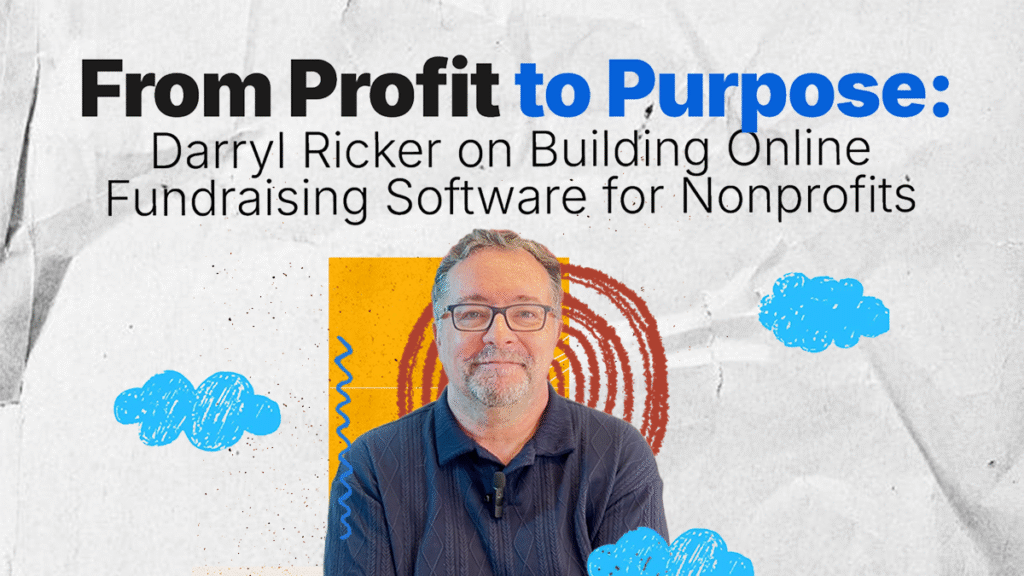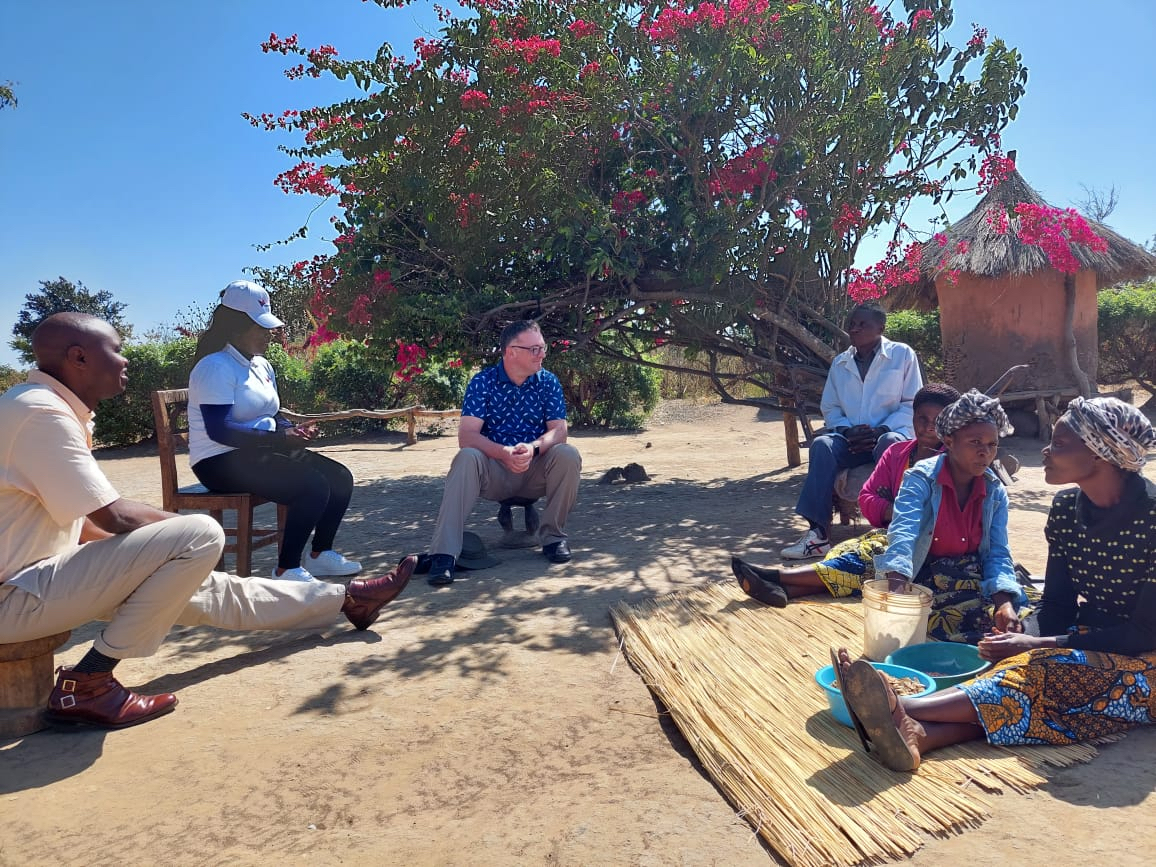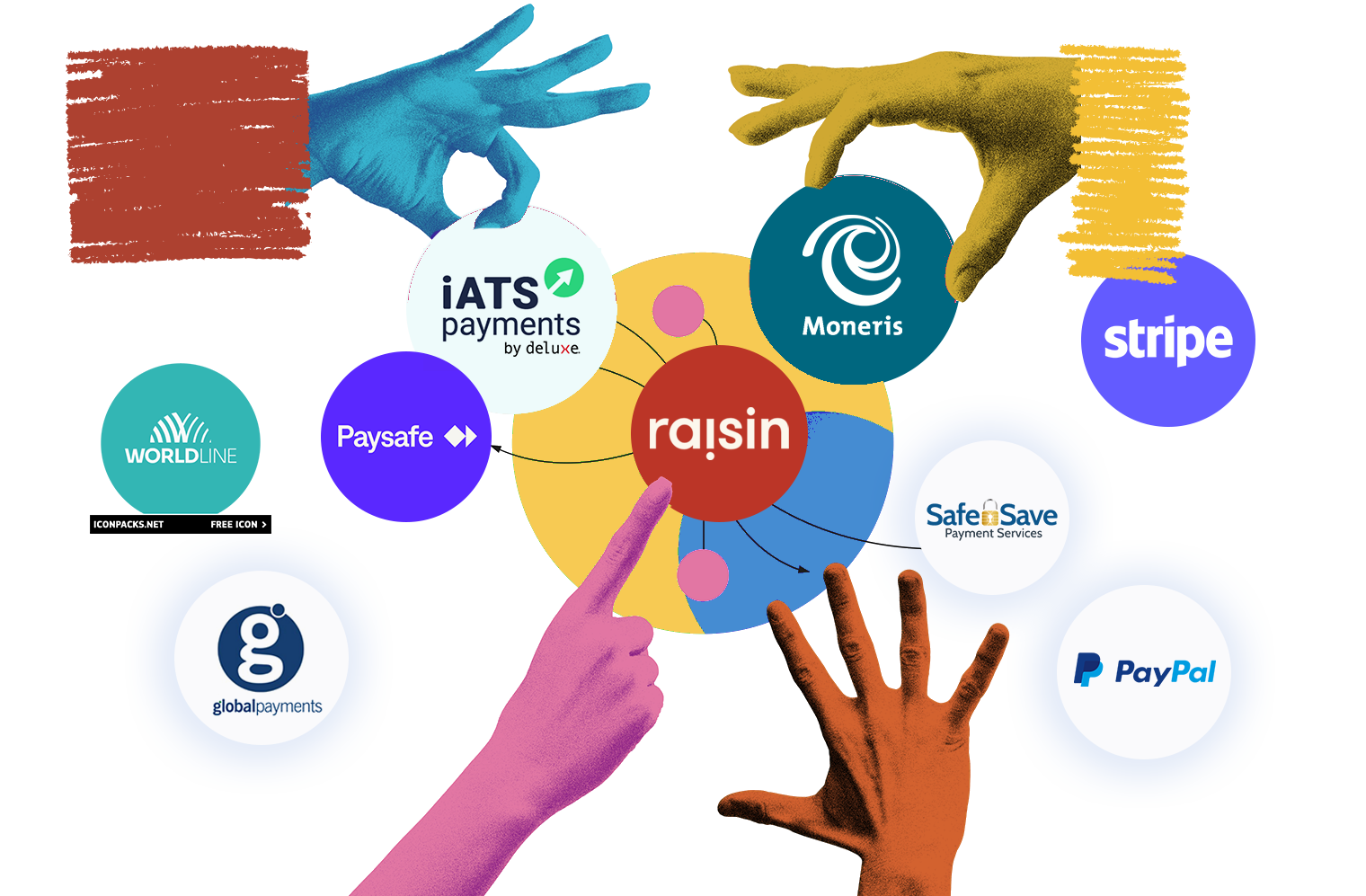Darryl Ricker on Building Online Fundraising Software for Nonprofits
Updated October 30, 2025
Darryl Ricker is the new Chief Technology Officer (CTO) here at raisin, where he uses his decades of experience in engineering and product leadership to build an online fundraising software designed to help nonprofits thrive. After a career in corporate sectors like insurance and telecommunications, purposeful work is now his focus – and it helps him sleep much better.
First, supporting communities in Africa through mobile communication, and now building tools that make fundraising more efficient and human. Darryl's leadership style has its roots in genuine care for people, with a mission to create meaningful impact in the nonprofit sector using technology.

You’ve led major engineering and product transformation across different sectors, from insurance to international development.
What made you choose to bring your skills into the nonprofit space, and what lessons are you carrying into your work?
Until four years ago, my career was best summarized as helping large companies increase their profits. And through that era, I was involved in some really awesome and cool technology projects. I worked with some fantastic people, and it was also a lucrative field to be in at that time. But when I put my head down on my pillow at night, I didn’t feel that great about making an insurance or telecommunications company more money.
About four years ago, I got an inbound call from a recruiter at an organization that was operating a communication platform across Africa. Their user base was people at the bottom of the economic pyramid, who had nothing more than a basic phone. These individuals often had no access to power or running water. That phone and the information service they called into were their lifeline to the world. Through that organization, they received important information on family planning, farming practices, and other relevant topics.
So, as soon as I heard about that opportunity, I jumped at it and had a really rewarding three years of doing that work. And it helped me understand that my time and my work as an engineering leader could be used for good.

I received a similar call a few months ago about a company in Canada called raisin, which I was not familiar with. When I looked into raisin and found out that we’ve spent over two decades helping nonprofits raise money, it was just a question of how quickly I could sign up to be part of that. I’m really excited to be here.
We’re really excited to have you here as well, Darryl.
What role would you say software plays in helping nonprofits grow, connect with their community and create change?
You said software, but I think technology in general is a great connector. It’s also a great efficiency multiplier. It can be used to connect people within an organization and to their constituents, including potential donors, fundraisers, and potential beneficiaries of the nonprofit.
In our world of fundraising, tasks such as handling payments, issuing tax receipts, and building community are a massive burden for many nonprofits. Automating these tasks can significantly reduce that burden, as nonprofits are typically understaffed. So, as I mentioned, technology can be a great connector and a force multiplier in terms of efficiency.
How do you build technology that is human, intuitive, and actually useful to people who work at nonprofits?
I think to anyone who’s not a technologist, not just in the nonprofit space, technology is a black box. Most of us don’t actually understand what’s inside our phones or our laptops. So, it’s crucial for us as technical people to remind ourselves of that.
The only thing people care about is what that technology does for them. So, building something intuitive, human, and useful is essential. Much of that is achieved by adopting a design and user research mentality, and saying, “I want to understand my users really well,”…“I want to design a system that’s easy to use and actually does useful things efficiently.” That’s the core of it.
Sometimes the technology is very simple, but at other times it’s very sophisticated and complicated; you can still use great technology to deliver that experience. But no one really cares what programming language you used to build that technology. It’s good to remind ourselves as technologists that what really matters is what the thing does on the outside.
In line with that, what are some key technology initiatives you’re excited to drive at raisin 2.0?
I can tell you some really exciting things on our roadmap that are happening right now. One of those is called “raisin Payments”.
Today, raisin integrates with seven or eight different payment providers, each with its own fee schedule and technology. raisin is now becoming a payment provider and a one-stop shop for nonprofit fundraising. This results in simplified administration and lower fees, which means that our nonprofit clients can keep a higher percentage of their donation amounts.

So that’s the number one that’s going on right now.
The second thing is that we’re starting to incorporate AI into our software. When raising money for fundraising events like Movember, the biggest pain for me was creating social media or email posts to potential donors. On multiple occasions, I was blocked by not being able to do that quickly.
We’re almost finished putting in some AI capabilities to help people write things like social media posts that are personalized and have all the necessary information about the cause they’re fundraising for.
That’s a feature I’m sure donors would love to try out. What’s the best advice you’ve ever received as a leader, and just generally in the course of your career?
I’ve received plenty of good advice over the years. But the piece of advice that’s stuck with me is something I observed early in my career.
I looked at the leaders whom I liked and for whom I did my best work. And I realized they were people who cared about me and, in general, their team members. So, not just their direct reports, but everyone on their team. So even if they were the CEO, they made a point of caring about everybody. Those leaders ultimately got the best out of their employees.
It’s become a habit. That genuine care you have for people creates an environment where people do their best work. And that’s what you really want. It’s the best thing to do, and it’s the right thing to do.
What’s a tech trend that you’re observing, but you’re not sold on just yet? Especially since you’ve already worked in the cutting-edge part of the space, Gen AI.
My answer is AI in general. I’m obviously sold on parts of it, but I also know the limitations and dangers of AI. Partly because I’m a technologist, partly because I put it into practice in the real world. So I’m worried about a couple of specific things around generative AI and AI in general.
One is the reduction in people’s willingness or ability to think. I’ve seen some recent studies, and they’re just starting to understand how young people are using generative AI to do a significant amount of their homework or thinking. They’re actually becoming less able to think independently, which is somewhat terrifying. I don’t want to see a society where we stop thinking and leave it all to an AI.
The second thing is the environmental piece. OpenAI said they spend tens of millions of dollars on people who say “thank you”. It’s obviously lovely that people are saying “thank you”, but that round trip from someone saying “thank you” to ChatGPT responding costs processing time on a server somewhere.
That’s concerning because of how much the use of AI, with all these servers and GPUs (the graphics processing units that drive all the AI technology), is hurting our environment, especially in a world where we’re already starting to see major weather events and impacts from our climate. So while I’m sold on the use cases, I’m also a bit concerned.
These are serious concerns. So, why is it still worth it for nonprofits to invest in AI tooling
The reason that investment in AI is vital for nonprofits is to allow them to accomplish more with the limited resources they have. The ability to create a chatbot that can engage with potential donors, or allow someone participating in an event to compose social media posts that help them raise more funds for their cause, is too valuable to ignore.
Given that our nonprofit partners are raising funds for activities like cancer research and improving mental health, their missions are essential to all of us.
Hello! My name is Darry Ricker. I’m the Chief Technology Officer here at raisin. I’ve spent a couple of decades in and around the Toronto area working at various tech companies, leading tech teams, and sometimes, product management teams as well.
Have thoughts about the future of fundraising and NFP tech? Grab some time to chat with us.